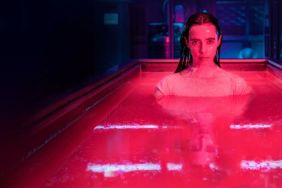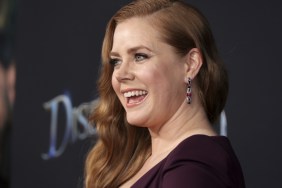
Seasoned horror fans will find themselves filled with ennui and creating a mental checklist of every genre trope imaginable the film calls upon – usually with ear-piercing vigor. Newcomers to fright fare and I imagine that is this PG-13 films draw will likely enjoy the supernatural assault it offers and seeing former Potter, Daniel Radcliffe, pushing his way through a house of horrors.
Out of Hammer Films latest crop of productions since its rebirth, The Woman in Black on an atmospheric level is undoubtedly the most faithful to the UK production companys oeuvre. The production design and locations are effective and foreboding, absolutely stunning work that sucks you right in. The story, however, does not. Its a disjointed mess that falls into the trap of being one of those films where you watch someone walk around for enormous stretches at a time. And while the filmmaker uses those minutes ticking away to throw scares gags at the audience, nothing is truly happening to drive the plot forward. Yes, Radcliffe is the lead, but it is the house he creeps around and the eccentric accoutrements it is littered with that are the stars.
The actor takes a nearly dialogue-free role as Arthur Kipps, a widowed lawyer who leaves his young boy behind in London to travel to the Eel Marsh House, an ominous mansion set outside the village of Crythin. Hes been sent by his employer to sort out the affairs of the homes deceased owner. There, he finds a village in the grip of fear – where children are dying inexplicably – and a house with a dark history involving the eponymous spirit.
When Kipps is locked away inside the Eel Marsh House, The Woman in Black is predictable and laden with cheap scares that never transcend the mirthless pacing. Shrieking spirits, cawing birds, rumbling faucets, clanging wind-up dolls and other gags aspire to unsettle the nerves but instead become annoying distractions from the film The Woman in Black could have been, which is one of creeping dread. Watkins hints at more quiet, robust frights and those moments work best when, for instance, the titular wraith is seen quietly creeping up on Kipps or something is discovered slowly rising out of a black miasma.
Eventually, The Woman in Black breaks from the usual haunted house formula and resumes its narrative, delving into the Womans back story and her impact on the village. The latter is especially creepy and offers the story a genuine threat as opposed to a bunch of spooks harmlessly terrorizing Kipps. But even then, the films solution to the supernatural events have been seen countless times before, some of the details dont quite make a whole lot of sense and any savvy audience member will know that the solution to the madness wont work and something awful still might occur.
Perhaps if this was one of the very first haunted house or ghost stories I had ever seen, The Woman in Black might have worked, but for now, its an ideal gateway drug horror film for the uninitiated that will hopefully push fledgling genre fans to seek out far superior slow burn ghost tales.
Rating: 5/10









